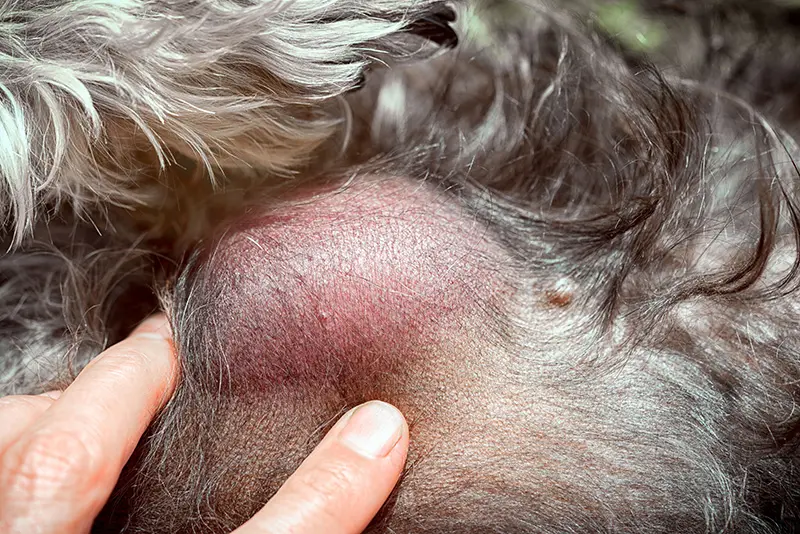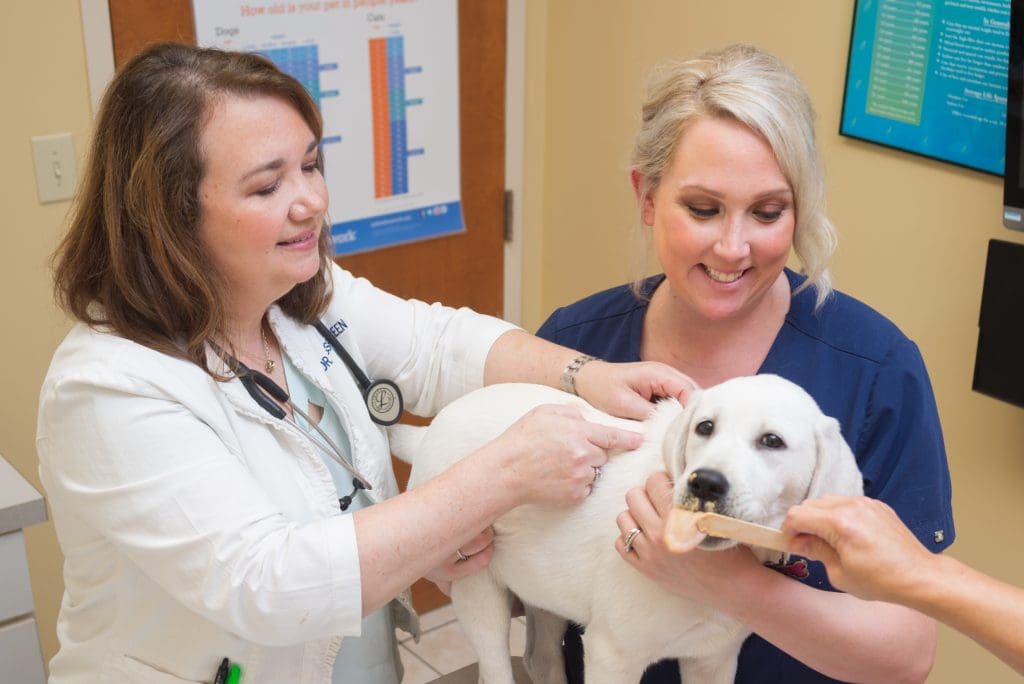 One moment, you’re relaxing at home cuddled up with your furbaby, and the next, your stomach drops.
One moment, you’re relaxing at home cuddled up with your furbaby, and the next, your stomach drops.
When you’re a pet parent, finding a strange lump or bump on your dog can send you spiraling. You may wonder how long it has been there, whether or not it’s painful for your pup, and most ominously: could it be cancer? Of course, the only way to know for sure (and the best course of action) is to make an appointment with your vet. In the meantime, however, it can help to read up on the most common explanations for skin abnormalities in our furry friends.
Benign lumps and bumps in dogs
While you wait for your pup to be examined by a veterinarian, take heart: most of the skin growths found on dogs have an explanation other than the Big C. Some of the most common ones include:
- Lipomas: Painless, fatty tumors that often appear on aging, large-breed, or overweight dogs.
- Perianal Adenoma: Benign tumors that form around the anal glands. They are typically slow-growing, and more common in male dogs. While harmless, they do have the potential to become ulcerated.
- Warts: If you notice a sudden cluster of cauliflower-textured growths, warts could be to blame. They are caused by a highly contagious virus that is easily communicated in social environments like dog parks. Young dogs with developing immune systems are the most susceptible.
- Abscesses: If wounded or irritated skin becomes infected, a painful, swollen pocket of pus may form. If the lump is hot to the touch or appears to cause your pup discomfort, you may suspect an abscess.
- Allergic Reactions: Just like us, our furbabies can experience raised hives in response to seasonal irritants or insect bites. Hives are often accompanied by excessive scratching.
Treating and diagnosing skin lumps
Because the best course of treatment for abnormal skin growths depends entirely on an informed diagnosis, step one for you, as a concerned pet parent, should be an appointment with your vet. You can help your vet accurately access the underlying cause of your dog’s skin issues by providing answers to questions, such as:
- Has the growth appeared suddenly or changed over time?
- Has your pet experienced a recent decline in appetite or other behavioral shifts?
- Have they been scratching, chewing, or indicating that the affected area is itchy or painful?
 Could my dog have cancer?
Could my dog have cancer?
In some cases, your vet may be able to visually determine the cause of concerning skin growths. In others, he or she may recommend a biopsy to examine the lump or bump more closely. If a tissue sample does reveal cancer cells, recommended courses of action depend on the type of cancer but may vary from the surgical removal of the mass to chemotherapy or radiation. Fortunately, treatment options are constantly improving, and so is the prognosis for pups facing cancer. Your dog is a member of your family, so it is important to work with your pet’s healthcare provider to establish the right treatment plan for you and your best friend.
Canine lumps and bumps: the bottom line
Though the wait may feel excruciating, make arrangements to get your furbaby examined by a professional if you discover a lump. Some diagnoses benefit greatly from early intervention, so time lost may be options lost.
Every moment that you don’t hesitate to seek out a vet’s opinion is a moment closer to putting your worries to rest.


 Could my dog have cancer?
Could my dog have cancer?  For new pet parents, just the mention of Parvo may inspire dread. Symptoms are known to set in suddenly, and dogs are at the highest risk of death just
For new pet parents, just the mention of Parvo may inspire dread. Symptoms are known to set in suddenly, and dogs are at the highest risk of death just  How does Parvo spread?
How does Parvo spread? When your cat needs medicine, make it easier on yourself and your favorite feline by using an alternative to pills. As a side benefit, your kitty won’t run away whenever you approach because you’ve created a negative association.
When your cat needs medicine, make it easier on yourself and your favorite feline by using an alternative to pills. As a side benefit, your kitty won’t run away whenever you approach because you’ve created a negative association.




